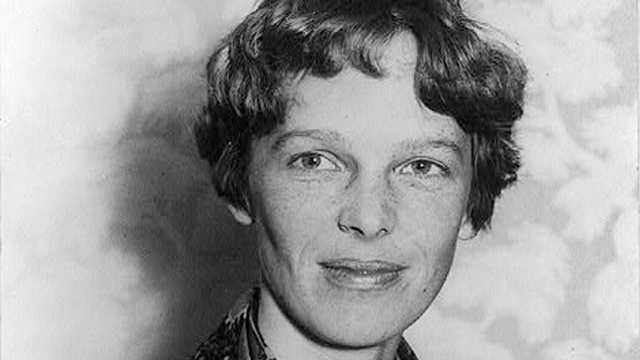On April 16, 1912, Harriet Quimby made aviation history by becoming the first woman to fly solo across the English Channel. This groundbreaking achievement marked a major milestone not only in aviation but also in the history of women’s rights and their participation in the rapidly developing field of aviation. Quimby’s accomplishment was part of a larger wave of women making significant contributions to society during the early 20th century, an era when women’s roles were beginning to expand beyond traditional expectations.
Harriet Quimby: A Trailblazer in Aviation
Harriet Quimby was born on May 11, 1875, in Arcadia, Michigan. Before becoming interested in aviation, she had a varied career that included acting, writing, and journalism. Quimby moved to New York City in the early 1900s to pursue her writing career and became the first female reporter for The New York Times. It was during this time that she began to develop an interest in aviation, an industry that was rapidly evolving after the Wright brothers’ successful flights at Kitty Hawk in 1903.
Quimby’s curiosity led her to take flying lessons in 1911, under the tutelage of famous aviator, Louis Blériot. Blériot was a French aviation pioneer who had already made his own mark in history by being the first person to fly across the English Channel in 1909. His success inspired Quimby, who was determined to push the boundaries of what women could achieve in aviation. In August 1911, Quimby earned her pilot’s license from the Aeronautical Society of America, becoming the first American woman to do so. By the time she made her historic flight across the English Channel, Quimby had already gained considerable attention as one of the few women flying in an era dominated by men.
The Historic Flight: Crossing the English Channel
On April 16, 1912, Quimby took off from the cliffs of Dover, England, in a 50-horsepower Blériot monoplane. The weather conditions were less than ideal—winds were strong, and there was an overcast sky—but Quimby, with her trademark determination, pushed forward with her plans. Her goal was to fly across the 21-mile stretch of water that separated Dover from France, an endeavor that had already been completed by a few men, but never by a woman.
The journey was a risky one, as aviation technology was still in its infancy, and the aircraft were not as reliable or as safe as modern planes. Nevertheless, Quimby’s flight lasted approximately 59 minutes, and she landed safely in the French town of Hardelot, near Boulogne-sur-Mer. In doing so, Quimby became the first woman to fly across the English Channel, cementing her place in aviation history.
Quimby’s feat was widely reported, and she quickly became a celebrated figure in both the aviation community and in the wider public. Her success was seen not only as a triumph for aviation but also as a significant moment for women’s empowerment, proving that women could achieve what had once been considered a male-dominated field.
The Legacy of Harriet Quimby
Although Harriet Quimby’s flight across the English Channel was a remarkable achievement, her career was tragically cut short. Just over a year after her historic flight, on July 1, 1912, Quimby died in a plane crash during a flying exhibition in Massachusetts. She was piloting a monoplane at the time when it went into a nosedive and crashed, killing her instantly. She was just 37 years old.
Despite her untimely death, Quimby’s legacy as a pioneering aviator lived on. She inspired many women to take up flying, and her accomplishments paved the way for future female pilots. In fact, women like Amelia Earhart, who would go on to become one of the most famous aviators of all time, drew inspiration from Quimby’s achievements in aviation.
In the years following her death, Harriet Quimby became a symbol of determination and courage for women everywhere. She was an example of how persistence and passion can break down societal barriers and open doors for future generations of women. Quimby’s story was a reminder that women had the capacity to achieve greatness in any field, no matter how difficult or unconventional it might seem.
Quimby’s Influence on Women in Aviation
Harriet Quimby’s achievement in crossing the English Channel was part of the broader movement for women’s rights in the early 20th century. As women in the United States and Europe fought for the right to vote and for equal opportunities in the workplace, Quimby’s success helped to demonstrate that women were capable of taking on challenging roles in society. Her actions contributed to the growing visibility of women in professions like aviation, medicine, and science, where they had previously been excluded.
In particular, Quimby’s work encouraged other women to pursue aviation. Her legacy laid the groundwork for women aviators like Amelia Earhart, Bessie Coleman, and Jacqueline Cochran, who would go on to make their own groundbreaking contributions to aviation. Amelia Earhart, in particular, would often credit Quimby’s achievements as an inspiration for her own endeavors, particularly in her pursuit of solo flights across the Atlantic and Pacific Oceans.
The Continuing Impact
Today, the story of Harriet Quimby is celebrated as an integral part of aviation history. Her trailblazing flight across the English Channel is commemorated by aviation enthusiasts and historians alike, and her contributions to the advancement of women in aviation are recognized worldwide. In the decades following her death, various landmarks, memorials, and aviation awards have been named in her honor, further solidifying her place in history.
Quimby’s story has also been retold through books, documentaries, and historical exhibitions, continuing to inspire new generations of women to pursue careers in aviation and other fields traditionally dominated by men. Her courage, skill, and determination to pursue her passion for flying remain an example of what can be accomplished when one dares to challenge the status quo.
Conclusion
Harriet Quimby’s flight across the English Channel on April 16, 1912, marked a historic moment in the world of aviation and in the broader movement for gender equality. As the first woman to achieve this remarkable feat, she broke barriers and paved the way for future generations of women in aviation. Though her life was tragically short, her legacy continues to inspire those who seek to push the boundaries of possibility and challenge societal expectations. Harriet Quimby’s bravery and pioneering spirit remain a testament to the power of determination and the impact one person can have in shaping history.







What do you think?
Show comments / Leave a comment